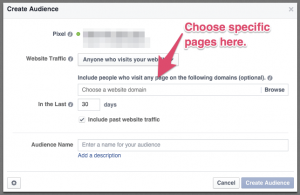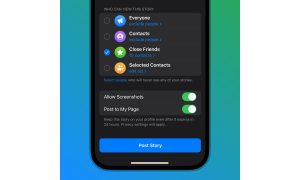Long before the internet emerged as a powerful medium to reach out to your audience, political organizations invested in expensive broadcast campaigns. Politics has always been about listening. Woodrow Wilson, who was President of the United States a hundred years ago, said,
“The ear of the leader must ring with the voices of the people.”
Clearly, a lot has changed in the last century.
Now, with the emergence of social media, political campaigns have started integrating digital strategies to their efforts.
A digital strategy for politics is developed to support the key components of the campaign such as canvassing, GOTV and fundraising. Much like a digital marketing strategy for businesses, the focus is on using a digital approach to understand the target audience.
In both cases, the end goal is to build dedicated support, for the candidate or maybe for a product being sold, among the public. The campaigns address people’s requirements (and how the candidate or the product is going to fill that gap) directly. Key insight into their needs comes from monitoring the relevant people through social media.
Media monitoring in politics is utilized to help the candidate engage their audience, form effective messages, and emerge as a packaged, political trend for the age. These digital strategies developed using classic approaches used in politics that prove effective even today.
Using these lessons in defining your brand’s digital strategy will boost your brand image and help you build a strong connection with your customer.
1. Design a monitoring blueprint
Monitoring social media keywords is way easier than monitoring public opinion on the street.
Begin with an extensive list of terms and hashtags to watch on networks like Twitter, Instagram, Facebook etc. Find the people who follow you, have tweeted about you, or have ‘liked’ your posts. There might be some people who subscribed to your email list or engaged with your site but not connected over social media.
You should build those bridges first. Keep an eye out for Twitter hashtags, Facebook comments, and Instagram keywords related to your business.
2. Expand your horizon
Find the people who have mentioned your brand or product over social media and take the engagement a step further. Ask them to tweet with a certain hashtag or share a post with their network.
Remember your followers have followers too. Your marketing reach will be substantially amplified by tapping into communities where one of them is a vocal advocate of your product. Look for conversations in blogs and forums to discover close-knit communities beyond social networks.
3. Identify engagement and demand
Demand can be turned into engagement with the right approach. Listen closely for comments, likes and posts that align with your product, and reach out to those people. Spot the gap in their lives and configure your message according to their needs.
Keep track of who among them liked or commented on your Facebook page, mentioned or followed you on Twitter or even subscribed to your newsletter. Those people are now engaged with you and are closer to conversion.
4. Merge your inflowing and outreach data
Add all the people who support you on social media to your marketing outreach list. Connect with them and ask them to spread your message among their friends. This will bring advocates into your social media outreach efforts easily, since they’re already talking about you. They also feel closely tied to your brand, which leads to long-lasting relationships.
5. Know what the audience wants to hear
This is, of course, one of the key aims of a social listening strategy. Listening helps you understand the perspective of your target audience. It makes you better at addressing challenges by paying attention to what they ultimately want.
To get better at this, follow your competitors and watch what people say about their product. Figuring out why people feel the way they do will lead to discovering the right approach for different types of audience.
6. Map a path of engagement
The deciding factor for one person might be completely different from another’s in choosing your product. Keep track of the customer’s’ journey and gauge their sentiment to segment your audience by demographic.
Map their mental path from indecision to firm advocacy. Political campaigns use this approach to come up with specific messages for distinct segments of voters. Tracking the customer’s’ journey will help you understand what message worked and how to approach a certain demographic better.
7. Make communication inroads into their lives
Political campaigns scale and recruit volunteers within a limited timeframe by entrusting them with a common goal. Supporters bring in more people they convince to join the cause, who in turn spread the message further.
This model of engagement is amplified over social media, where customers who vouch for your product raise interest further within their circles. Having someone they know vouch for your product is the best marketing your product can have.
8. Dissect your data to understand what works
Every action taken by a customer should be recorded and analyzed. This can help in identifying the exact steps that lead to their conversion. For example, “what percentage of people who registered through your site also followed you on Twitter?” This will answer what trends are holding up and will lead you to form a better campaign strategy.
9. Project a strong social media reputation
Social interaction helps to present your brand’s image to the audience. Develop your brand personality through numerous social media conversations in terms of:
- Being present in heated discussions in comment sections
- Adding something of value to the conversation
- Dealing with trolls and negative comments while holding up to your level
- Engaging those who disagree with you in a positive manner
Be wise in picking your battles and learn to let go (people can be horrible… sometimes).
10. Improve through healthy competition
Remember the suggestion to follow your competitors? Monitoring their stance and messages will shine light on your weaknesses and help you improve in the long run.
Ask yourself:
- Is the brand presentation structured well?
- How credible are the complaints and negative comments?
- What’s the most positive approach made by the competitor that is pushing their campaign?
It’s those who push you and put you on the spot that force you to grow. So, monitor what the opponent says related to topics central to your business, and it will expose the flaws in your branding.
11. Adapt a hyper specific messaging strategy
Political campaigns add voter data and social listening to paint a vivid picture of the electorate. It helps them understand the specific issues that resonate with a certain section of voters. Add this approach to your digital monitoring and observe how and why your product gets talked about.
Discover these conversations through keywords and understand what the customer sees in the product. This step proves useful in creating actionable insight from social data.
Social listening is more than just being aware of your position against others in the market. Proper listening involves a keen sense of affect and emotional connections behind an interaction. It is about being aware of mood, body language, thoughts and feelings. When done right, it is possible to hear those voices ring right through text in a social post.
Digital & Social Articles on Business 2 Community(61)







